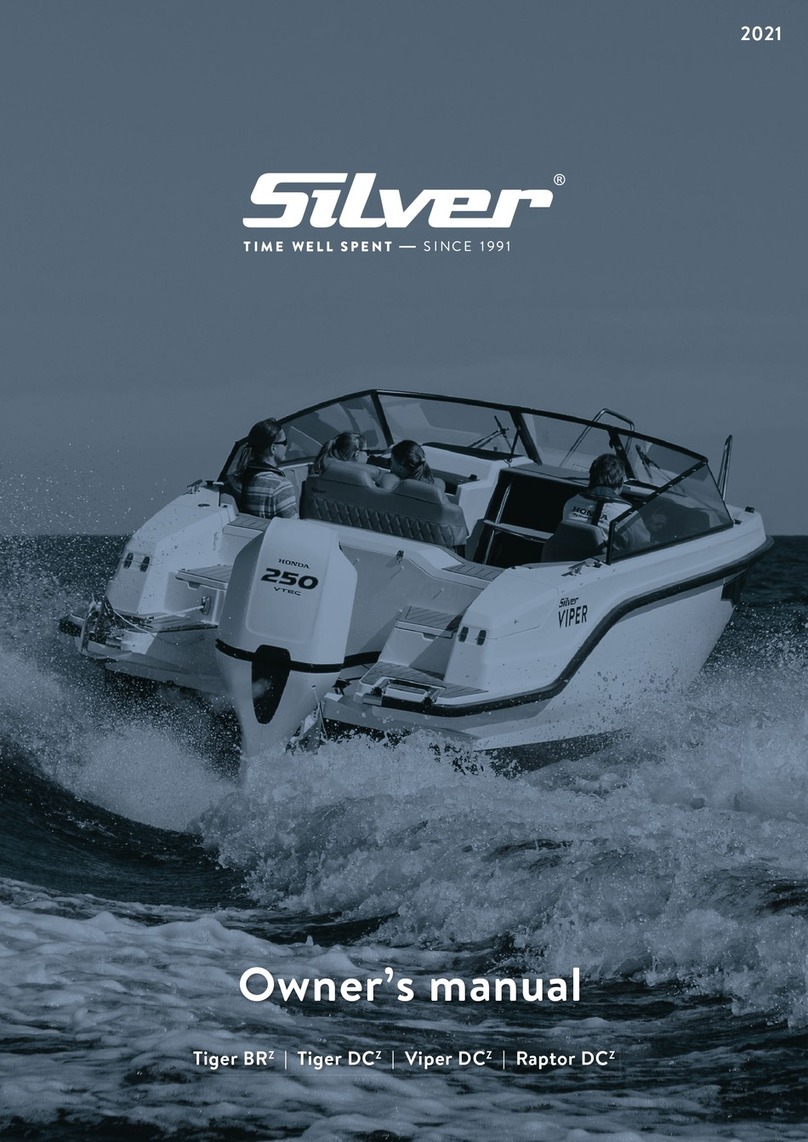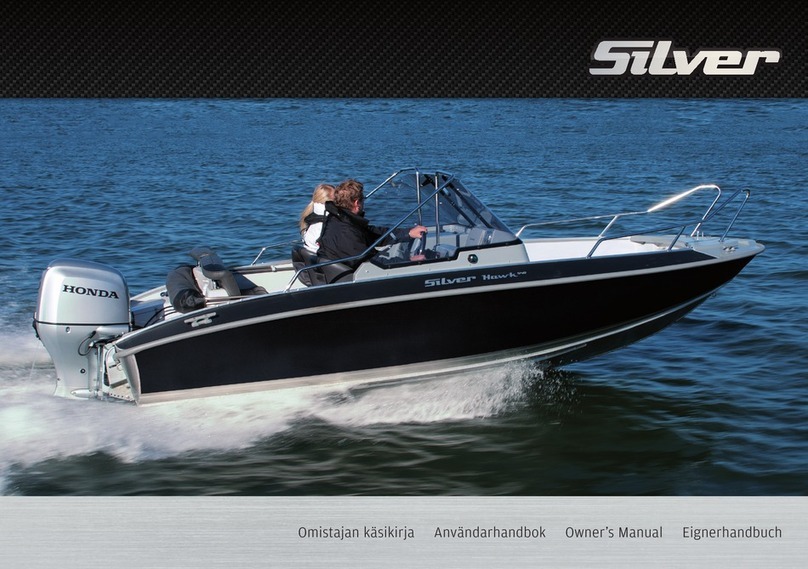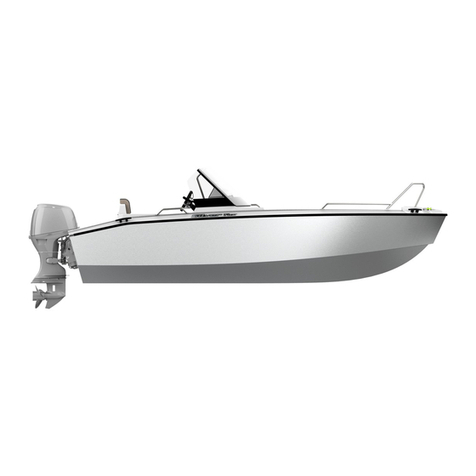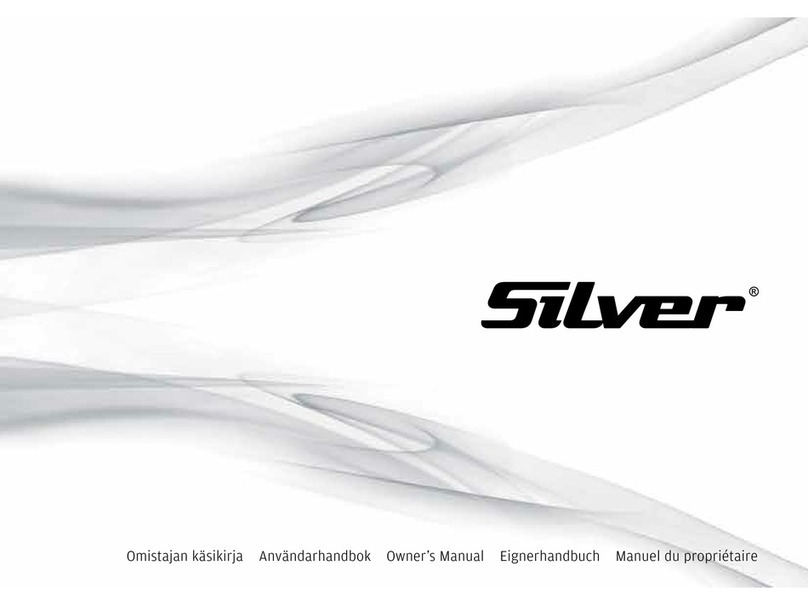4
Preface
Dear Silver boat owner! Thank you for buying a Silver boat. We hope
that you will enjoy it!
This Owner’s Manual is intended to help you use your boat safely. It
provides a detailed description of the boat and related systems and
accessories as well as information about the proper operation and
care of the boat. Please read this manual carefully before using the
boat for the first time.
Naturally, the Owner’s Manual is no course in seamanship or boat-
ing safety. If this is your first boat or you have traded your old boat
in for a new type that you are not familiar with, make sure, for
you own comfort and safety, that you gain enough experience in
handling and using the boat before accepting command. The deal-
er, boating clubs and national motor-boating and sailing associa-
tions will be happy to recommend local boating schools or compe-
tent instructors.
Make sure that the design category of your boat will meet the
predicted wind conditions and wave heights and that you and your
crew can handle the boat in such conditions. The wind and wave
conditions corresponding to design categories A, B, and C range
from a storm to strong winds involving a risk of exceptional waves
and gusting. Although your boat is designed for such conditions,
safe operation requires an able, trained crew and a well-maintained
boat.
This Owner’s Manual is not a detailed maintenance or troubleshoot-
ing guide. In case of problems, contact the manufacturer or your
dealer. Always have the boat serviced and repaired and any altera-
tions done by qualified personnel. Any modifications that may
affect the safety of the boat should be evaluated, carried out and
documented by a qualified person. The manufacturer accepts no
liability for unauthorised modifications.
In some countries, a special boating licence or authorization may
be required to operate the boat. These countries may also apply
other additional regulations.
Always keep the boat in good condition. Consider wear and tear
due to ageing, rough treatment or misuse. Any boat – irrespective
of its strength – may be seriously damaged if it not used properly.
Misuse is not part of safe boating. Always adjust your speed and
direction of travel to the prevailing swell.
If your boat is equipped with a life raft, read its operating instruc-
tions with care. The boat should always have the appropriate safe-
ty equipment (life vests, safety harness, etc. ) according to the type
of boat, weather conditions, etc. In some countries, such equip-
ment is compulsory. The crew should be familiar with the use of all
the safety equipment and emergency manoeuvres (for example, re-
boarding a person falling overboard, towing, etc.). Sailing schools
and clubs organise sea rescue exercises on a regular basis.
































